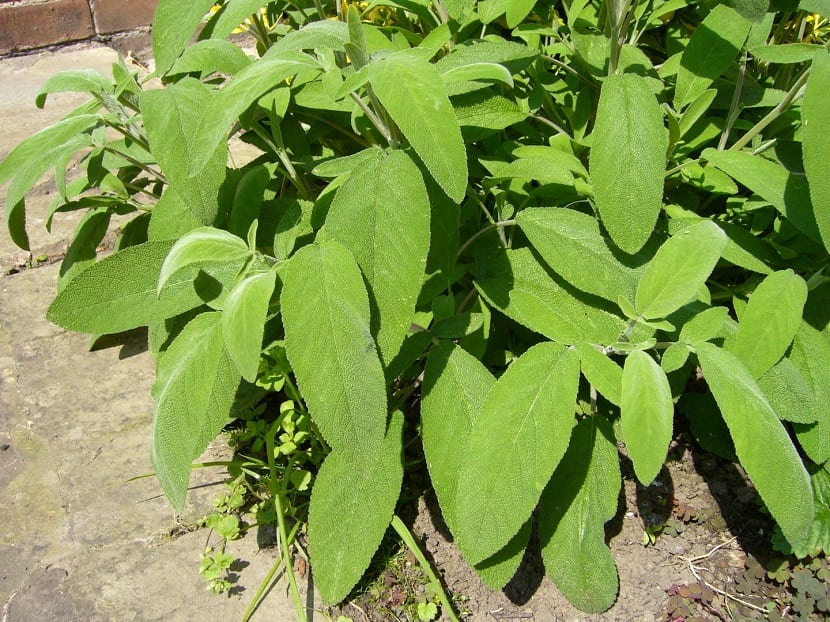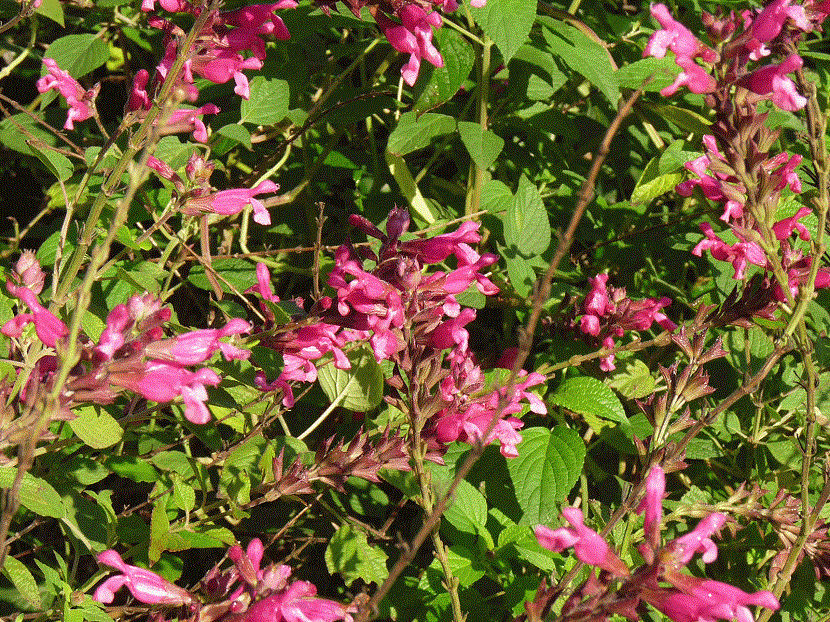
Salvia is a genus of plants It has about 900 species between herbaceous and shrubs. The species are made up of perennial, biennial and annual herbs.
In today's article we are going to talk about the types of Salvia that you can find in stores to plant later in your garden, so take note.
Most important varieties of Salvia

Sage Splendens: Originally from Brazil, it is one of the red species of sage. In fact, due to its vivid color, it is widely used to decorate. Its consumption produces hallucinations due to its composition of psychoactive.
Salvia Microphylla: It comes from Arizona and Mexico, also called pink sage, produces bunches of fuchsia flowers, is able to survive and continue to flourish even in temperatures down to -12 degrees.
Its flowering occurs in late summer and fall.
Sage Elegants: This plant has a characteristic that undoubtedly distinguishes it from the other species of sage since its foliage emits a delicious pineapple scent, specifically the "Scarlet Pineaple", whose flowers are deep red and particularly larger than normal.
But having a particular fruity aroma It is not exclusive to Scarlet as there are two other sub species, the “Honey Melon” whose characteristic aromas are melon scent and the “Tangerine” with a tangerine aroma.
These are not very resistant to low temperatures.
Salvia farinacea: Often used in gardens for its ornamental value, produces striking purplish-blue spikes, they are suitable to show off in pots and also on the ground in gardens.
The natives of Mexico and Texas, are resistant to high temperatures and they occur without problems in moderate climates; however, it requires a little more humidity than the other species.
Sage Leucantha: Originally from Mexico, which deserves its other name "mexican sage"And also known as"cat's tail”. It produces beautiful bouquets of white flowers combined with lavender blue or purple, with a velvety texture, ideal for pots, beds and borders.
Salvia Officinalis: Much appreciated for its medicinal properties such as healing, combats the absence of blood flow, stimulating, antiseptic, decrease in sugar in the blood and others.
This sage is also used as flavoring in culinary arts both Italian and from other countries.
Sage: Originally from Mexico, the most appreciated of this are its seeds which have a high content of Omega 3 and they are used to prepare a very nutritious gluten-free flour.

Sage Sclarea or Romana: It originates from the Mediterranean Sea and central Asia, highly appreciated by some for its spicy aroma.
Sage Apiana or White Sage: It is characterized by its beautiful bouquets of white flowers combined with lavender color. In ancient times they used it to drive away evil spirits and for the purification of the body, they also consumed it under the premise of immortality.
Nemorosa sage: Its leaves were used to make poultices that wounds healed, although today its use is more towards the ornamental.
In summary, sage is recognized worldwide thanks to its various species (more or less 900), its characteristics that range from the color of its flowers, their texture, the aromas that give off their resistance to different types of climate and soils and medicinal qualities capable of combating different pathologies.
The 900 species are distributed over four continents, with a great variety of sub species that, giving us pleasant aromas, colorful colors and shapes.
Mexico is the country with the largest variety of salviasThose that come from this country, as well as from South and Central America are said to be the most beautiful given that their flowers they are characterized by having very bright colors maintaining its flowering even in less favorable climates for other plants.
There are the NEA species that occur in jungle regions or plains, with a lot of tolerance to high temperatures and is that the NOA species They are typical of mountainous climates and high forests, they are able to withstand low temperatures.
Other Salvias: Salvia subrotunda, coccinea, uliginosa, pallida, nervosa, rypara, excerta, cuspidata, stachydifolia, atrocyanea and procurrens.
The article is interesting, only that images are missing from each of sage
We are glad you liked it 😉
hello, the divinorum is missing, salu3